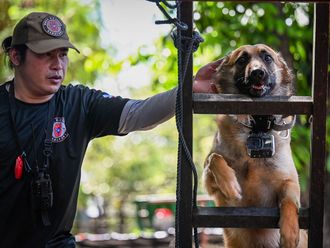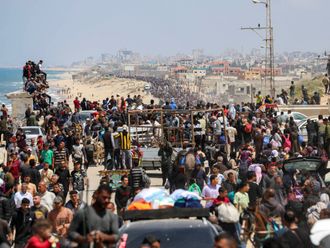Manila: Former President Ferdinand Marcos has been blamed again for the assassination of former Senator Benigno Aquino in 1983, which paved the way for a people-backed military mutiny which forced out the former dictator and propped to power Corazon Aquino to the presidency in 1986, a local paper said.
“The masterminds were the fascist dictator Marcos and a very close relative of Cory Aquino,” Jose Maria Sison, founder of the 45-year-old Communist Party of the Philippines and its military arm, the New People’s Army (CPP-NPA), told Wilson Flores, a columnist of the Philippine Star.
“General Fabian Ver [then the chief of staff] could not have coordinated the assassination plot, involving subordinate generals and colonels and several armed services, without the approval of Marcos,” said Sison, during an exclusive interview in the Netherlands where Sison has been living in exile since 1989.
“The cousin of Cory Aquino — who hated Ninoy Aquino and who was [then] one of the top cronies of Marcos — was the patron and boss of General [Romeo] Gatan,” recalled Sison, adding that Gatan was “responsible for getting [Rolando] Galman as a prop in the David Copperfield-type illusionist theatrics of the assassination plot.”
At the time, the Marcos administration blamed Galman, who was identified as a member of the CPP-NPA, as the killer of Aquino at the runway where the China Airlines plane had landed at the then Manila International Airport (MIA).
Fall guy
Later, two fact-finding boards showed that Galman was a fall guy because he was taken by government officials from his home in northern suburban Bulacan on August 19, 1983, and kept incommunicado in a hotel near the airport until the Aquino assassination.
One of the private citizens who got Galman from his home was associated with Eduardo Cojuangco, then an estranged cousin of Aquino, who was allied with Marcos.
A fact-finding board also found out that Aquino was shot on the service stairway of the China Airlines plane, not on the tarmac, and this could have been perpetuated by the escorts that got Aquino from the plane when they exited through the service stairway.
The trial of the murder case at the Sandiganbayan, an anti-graft court, came up with two versions of the case.
During the end of the term of Marcos, prior to a snap election in late 1985, the anti-graft court exonerated the escorts and other government officials who were involved in securing Aquino at the airport in 1983.
After the term of Marcos, when Aquino became president in 1986 (after running versus Marcos in the snap polls), a mistrial at the Sandiganbyan was declared. This resulted in the conviction of the military escorts, and the others who were involved in securing Aquino in 1983.
Aquino always blamed Marcos for her husband’s assassination. This never prospered in court.
When her son Benigno Jr became president in the 2010 polls, he did not formally blame Marcos and the Cojuangco relative for the death of his father.
The death of the elder Aquino sparked a strong anti-Marcos sentiment that culminated in the people-backed military mutiny in 1986.
Last week, President Aquino declared August 21 a special working holiday to commemorate the 29th anniversary of his father’s death.
Aquino released Sison after she became president in 1986. He was then imprisoned by Marcos in a military headquarters in suburban Taguig.
Sison lived in exile in the Netherlands after several leftist leaders were killed by right-wing rebels who helped propped Aquino to power in 1986.
She survived nine coup attempts that were launched by the right-wing rebel soldiers when she did not give in to some of their demands during her term.
Since 1992, during the time of former president Fidel Ramos, the government began holding peace talks with the communist National Democratic front, an umbrella that includes the CPP-NPA. Negotiations for comprehensive peace are ongoing.











